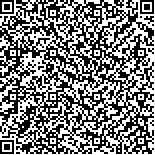罗春,谢斌,黄真,王才丰,吴健康.微型传感器运动捕获系统结合同步表面肌电对脑卒中偏瘫患者上肢够物功能的定量评估[J].中华物理医学与康复杂志,2017,39(4):253-258
扫码阅读全文

|
| 微型传感器运动捕获系统结合同步表面肌电对脑卒中偏瘫患者上肢够物功能的定量评估 |
|
| |
| DOI: |
| 中文关键词: 脑卒中 偏瘫 够物 运动学 表面肌电 定量分析 |
| 英文关键词: Stroke Hemiplegia Reaching Kinematics Electromyography |
| 基金项目:国家自然科学基金项目(81272166) |
|
| 摘要点击次数: 3385 |
| 全文下载次数: 5445 |
| 中文摘要: |
| 目的应用微型传感器运动捕获系统并结合同步表面肌电评估脑卒中偏瘫患者上肢够物动作的运动学及动力学特征。 方法选取16例脑卒中偏瘫患者[平均年龄(65.9±10.0)岁]及10例年龄相匹配的健康老年人作为研究对象。2组受试者坐在椅子上用患手(患者)或右手(健康人)够取放在肩前方距肩一臂长距离处的杯子,采用微型传感器运动捕获系统记录受试者躯干及上肢运动学数据,同时采集被测肢体斜方肌、三角肌前组、肱二头肌、肱三头肌表面肌电信号。共进行4次够取任务测试,选取最好的一组数据进行分析。将同步采集的运动学数据与表面肌电信号处理后得到肩、肘关节活动范围及达标时间、角度变化峰值及对应时间、每组肌群做功和肌群做功比值(如斜方肌/三角肌前组、肱二头肌/肱三头肌)等。本研究同时采用Fugl-Meyer运动功能量表(FMA)上肢部分对入选患者上肢运动功能进行评分。采用独立样本秩和检验比较脑卒中患者运动学参数及肌电参数与健康人间的差异,采用Spearman相关性分析探讨患者偏瘫侧上肢FMA评分与运动学特征及肌电特征间的相关性。 结果脑卒中偏瘫患者上肢够物功能的运动学参数及肌电参数与健康人间差异均具有统计学意义(P<0.05)。脑卒中患者偏瘫上肢FMA评分与肩关节活动峰速度具有相关性(P<0.05),部分运动学参数与肌电参数具有相关性,如肩关节活动最大角度与斜方肌做功、肩关节活动速度达峰时间与肱二头肌/肱三头肌做功比值间具有相关性(P<0.05)。 结论微型传感器运动捕获系统结合同步表面肌电分析可定量评测脑卒中偏瘫患者在三维实际环境中够取物体时的多关节运动学及动力学特征,为临床优化康复治疗方案提供客观依据。 |
| 英文摘要: |
| Objective To assess the reaching ability of hemiplegic stroke survivors using a motion capture unit (MCU) combined with surface electromyography (sEMG). MethodsSixteen stroke survivors with hemiplegia formed the experimental group, while healthy counterparts were selected as the control group. Both groups were asked to sit on a chair and reach for a cup on a table in front of their shoulder at arm′s length using their affected arms in the experimental group and their right arms in the control group. MCUs were fixed on their spines and arms to obtain kinematic signals, and the sEMG signals of the trapezius, the anterior deltoids, biceps and triceps of the tested limb were recorded. Each subject repeated the test 3 times, and the best result was retained for further analysis. After signal processing, the range of movement of the shoulders and elbows was extracted along with the time used to reach the cup, peak angular velocity, time to peak velocity of the shoulders and elbows, work of the muscles and work ratios of the trapezius/deltoid and biceps/triceps. The upper limb section of the Fugl-Meyer assessment (FMA) was also administered to evaluate the patients′ upper limb function. Independent sample rank sum tests compared the patients with the controls in terms of kinematics and sEMG parameters. Spearman analysis was used to explore the correlation between the FMA scores and the kinematics and sEMG characteristics. ResultsSignificant differences in the kinematic and myoelectric indicators were found between the patients and the controls. The average FMA score of the patients was correlated with the peak velocity of the shoulder joint. Moreover, the ROM of the shoulder was closely related to the work of the trapezius, while the time for the shoulder joint to reach peak velocity was closely related to the work ratio of the biceps and triceps. ConclusionAn MCU integrated with synchronous sEMG can quantitatively assess the kinematics and kinetics of hemiplegic stroke survivors, at least in reaching. This can provide objective guidance to optimize clinical rehabilitation. |
|
查看全文
查看/发表评论 下载PDF阅读器 |
| 关闭 |